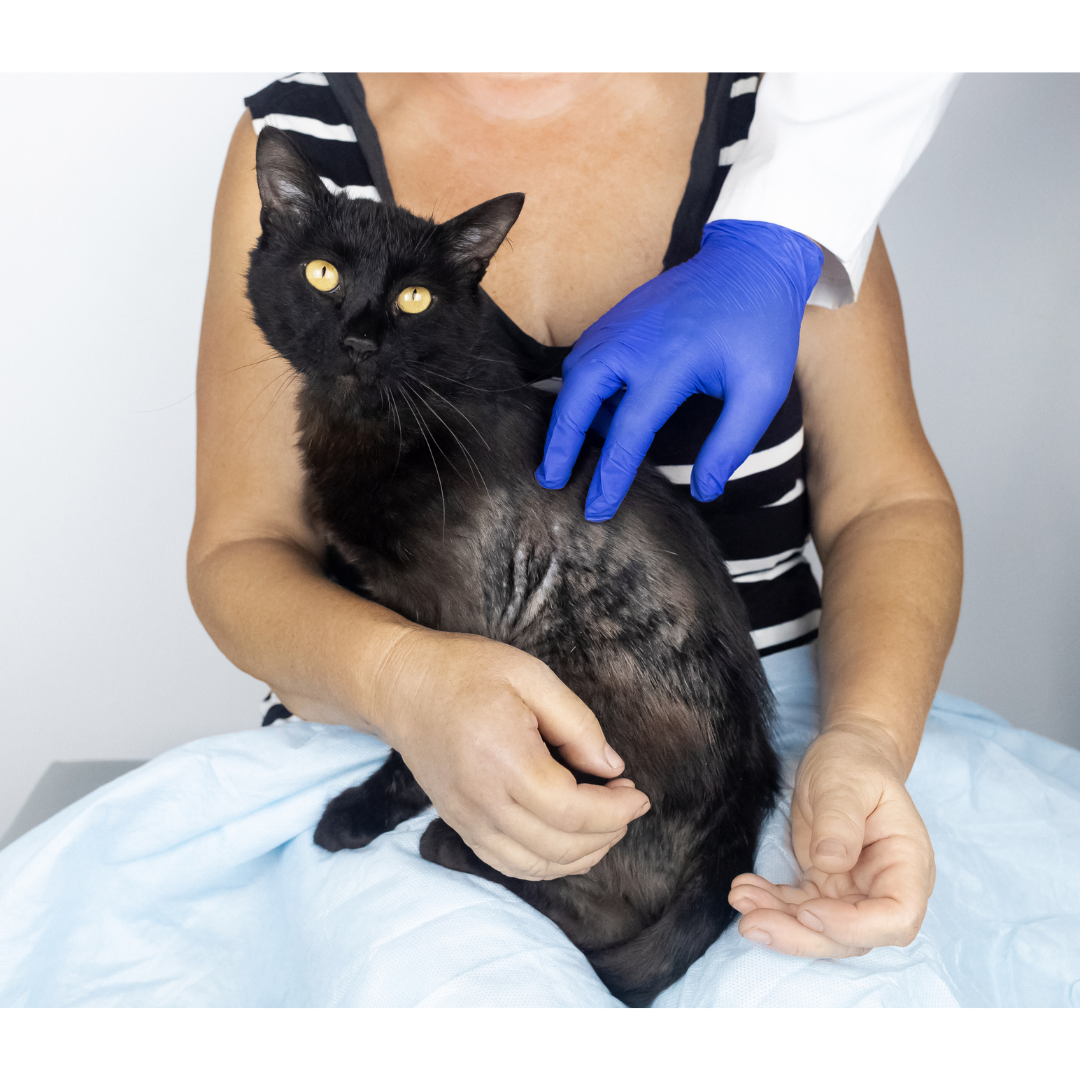
Atopic or Allergic Dermatitis in Cats
Atopic or Allergic Dermatitis is a common skin condition seen in cats, caused by inflammation that follows an allergic reaction to environmental allergens1.
It’s a type of immune-mediated disease, with affected cats seeming to have a genetic predisposition to developing hypersensitivity to allergens in their environment1.
Symptoms
The most common symptoms of atopic dermatitis in cats usually include12:
- Itching: Cats with this condition often exhibit signs of skin irritation, such as excessive scratching, licking, and biting3.
- Ear Infections: Otitis externa, or ear infections, are common1.
- Skin Infections: Recurrent skin lesions and skin infections, known as pyoderma, are often seen1.
- Hair Loss: Alopecia, or hair loss, is another symptom1.
- Raised Areas of Pink or Red Sores on Skin: These are also known as eosinophilic granuloma1.
- Irritability and Behavior Changes: These can also occur as a result of the discomfort1.
Causes
Atopic Dermatitis in cats is caused by an immune hypersensitivity to environmental allergens1.
Common allergens that trigger atopic dermatitis include pollen, dust, dust mites, mold, wool or nylon, and certain plastics4.
Exposure to these allergens can happen both outdoors and indoors4.
Effects
Atopic Dermatitis can lead to a variety of effects on a cat’s health and behavior.
The constant itching and discomfort can lead to behavior changes and irritability1.
Chronic skin infections can lead to scarring and changes in skin color5.
Hair loss from excessive scratching or licking can also occur1.
In severe cases, the skin may become thickened2.
Treatment
Treatment for Atopic Dermatitis in cats often involves a combination of medications, environmental management, and allergy testing6.
Some of the common treatment options include1:
- Corticosteroids: These are used to reduce inflammation and itching.
- Antihistamines: These can help control itching.
- Antibiotics: These are used for treating secondary infections.
- Immunosuppressive Medications: These can help control the immune system’s response.
- Allergen-Specific Immunotherapy: This involves exposing the cat to small amounts of the allergen to help build tolerance.
- Omega Fatty Acid Supplements: These can help improve skin health.
- Shampoos and Baths: These can help soothe the skin and control symptoms.
In addition to these treatments, allergen avoidance is sometimes possible if the allergen is identified1.
Conclusion
Atopic or Allergic Dermatitis in cats is a common but manageable condition.
With proper diagnosis and treatment, cats with this condition can lead comfortable and healthy lives.
If you suspect your cat has Atopic Dermatitis, it’s important to consult with a veterinarian for a proper diagnosis and treatment plan.
Love you feline companion more and show affection creatively.
Visit our shop for our awesome pet inspired graphic t-shirt collection wear it proudly and let the world know just how much your furry friend means to you.
Disclaimer: This article is intended for informational purposes only. It is not meant to substitute for medical advice or diagnosis provided by your veterinarian. If your cat shows symptoms, please consult your veterinarian immediately.



Leave a comment
This site is protected by hCaptcha and the hCaptcha Privacy Policy and Terms of Service apply.